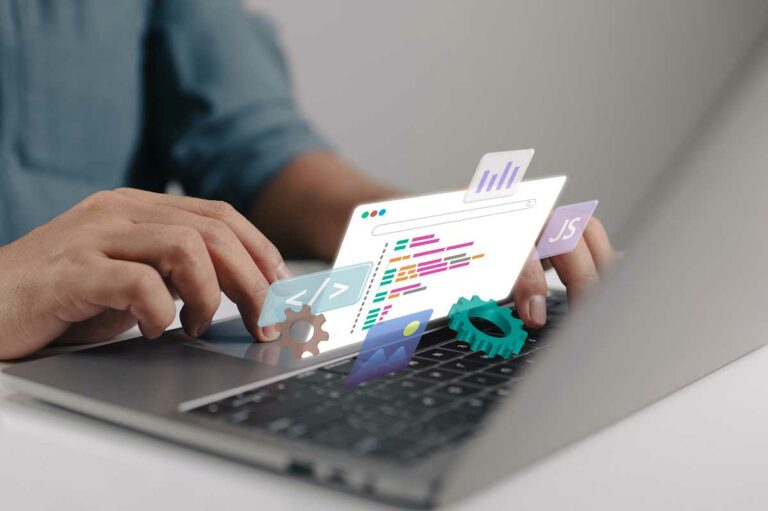SDLC Software Development Life Cycle
SRS is a reference for software designers to come up with the best architecture for the software. Hence, with the requirements defined in SRS, multiple designs for the product architecture are present in the Design Document Specification (DDS). After evaluating all the possible factors, the most practical and logical design is chosen for development. By adhering to an effective SDLC, teams can produce quality software products while meeting customers’ expectations faster within budget. Your work isn’t complete at handling the software to your client; it still needs continuous monitoring, updating, and maintenance to keep it working at an optimal state. And to meet the growing user demands and security risks, you need to develop new and improved functionalities and features along with security upgrades to keep delighting the end-users.
It also keeps everyone on the same page regarding the status of software development. This way, everyone can contribute as expected while communicating with greater transparency. This approach can look a bit messy at first because the stages overlap and repeat during each sprint. But, as sprints have clear timeframes and requirements, the process allows for great flexibility and organization at the same time. Agile methodology is a practice which promotes continue interaction of development and testing during the SDLC process of any project.
In the SDLC, Security Plays an Important Role
These are selected based on the demands of the software being developed. Business analysts gather requirements from their customers, target market, and industry system development life cycle experts to create a Business Specification (BS) document. Other organizations and teams may refer to this document as Customer Requirement Specification (CRS).
- Expert planning lets you manage security and quality risks across the program life cycle, all through your enterprise.
- Many companies put little effort into testing, even though a higher focus on testing might save customers a lot of revision time, including money.
- It’s advantageous for large projects since development teams can create very customized products and incorporate any received feedback relatively early in the life cycle.
- We cannot stress enough the importance of multimedia such as images, infographics, and videos in development.
- This comprehensive cost estimation at all stages results in a compounding action that helps the team achieve the goal within the budget.
It can also go through user acceptance software testing to check if it meets your customers’ expectations by creating a replica and allowing your developers and client to test it. Imagine that you create a full prototype of your app at the design stage, and then at the development or testing stage, your team finds a significant flaw. In this case, you’ll need to start all over again, going through the entire codebase and making necessary adjustments, then performing tests again. And as the development budget was already spent on building the complete app, making changes and fixing bugs will require additional resources.
Project Planning
Each step in an SDLC results in an output (document, diagram, working software, etc.) that acts as the necessary input for the next step. Despite this funnel-like approach, modern SDLC strategies are not strictly linear. The team often goes back a step or two in the SDLC to perform fixes or make improvements.
The testing stage ends when the product is stable, free of bugs, and up to quality standards defined in the previous phases. In traditional software development, security testing was a separate process from the software development lifecycle (SDLC). The security team discovered security flaws only after they had built the software. This led to a high number of bugs that remained hidden as well as increased security risks.
What is SDLC (Software Development Lifecycle)?
LogRocket simplifies workflows by allowing Engineering, Product, UX, and Design teams to work from the same data as you, eliminating any confusion about what needs to be done. The product manager/end user in this phase is responsible for evaluating the system software, which is the output of the previous phases. The evaluation is done before the project proceeds to the next planned spiral cycle. This phase is meant to identify any potential risk by planning the risk mitigation strategy.

The term resources refer to the HW/SW requirement, costs, time, benefits, and a few other essential items. Theoretically, this model helps teams to address small issues as they arise rather than missing them until later, more complex stages of a project. The agile model is relatively well-known, particularly in the software development industry. This can include handling residual bugs that were not able to be patched before launch or resolving new issues that crop up due to user reports. Larger systems may require longer maintenance stages compared to smaller systems.
Phase #6: Deployment
Once the software application has undergone testing and QA, it is delivered to the customer. This stage usually involves deployment engineers who make software available to customers. They may install the software at a company and/or help individual customers run the application on their computers.

The Waterfall approach is sequential, with each development stage isolated from others. With the Waterfall approach, development goes according to the initial plan, stage by stage, and no changes are made during the process. Thus, programming starts only when the app’s design is completely ready, and software testing starts only when all parts of the code are ready.
SDLC MODELS
They may present more than one design approach, and these ideas are documented in a Design Document Specification (DDS). As we’ve noted above, there are seven defined stages of the SDLC framework. The seven stages give developers the opportunity to produce notable and customized software products, helping their organizations sharpen their competitive edge. The information from this analysis forms the building blocks of a basic project. Thus, in this stage, the basic project is designed with all the available information.

During the analysis phase, a programmer develops written requirements and a formal vision document via interviews with stakeholders. DevSecOps, an extension of DevOps, is a methodology that emphasizes the integration of security assessments throughout the entire SDLC. It ensures that the software is secure from initial design to final delivery and can withstand any potential threat. However, unlike traditional software development that addresses security as a separate stage, SDLC addresses security every step of the way through DevSecOps practices.
What Does SDLC Develop?
In this phase of SDLC, the actual development begins, and the programming is built. The next phase is about to bring down all the knowledge of requirements, analysis, and design of the software project. This phase is the product of the last two, like inputs from the customer and requirement gathering. This is accomplished through “SRS”- Software Requirement Specification document which contains all the product requirements to be constructed and developed during the project life cycle. Once the requirement analysis is done, the next stage is to certainly represent and document the software requirements and get them accepted from the project stakeholders. A software life cycle model describes entry and exit criteria for each phase.
Bright Security Wins 2023 CyberSecurity Breakthrough Awards – CIO News
Bright Security Wins 2023 CyberSecurity Breakthrough Awards.
Posted: Fri, 06 Oct 2023 07:00:00 GMT [source]

Leave a Reply
Want to join the discussion?Feel free to contribute!